Welcome Back to YA Cafe, where book lovers can gather and chat about teen literature. I’m your barista, along with Ghenet from All About Them Words.
Each Friday we pick from a menu of topics and share our thoughts on our respective blogs. We’ve also got plans brewing for interviews, events and even some exciting giveaways, so stay tuned! Join the discussion by responding in the comments, on your own blogs or on twitter using the hash tag #yacafe.
Today’s Special is: Why Contemporary YA Rocks!
Have you been in a Barnes & Noble store lately? A few months ago, I was browsing my favorite section (teen, duh) and was stunned to discover that they had re-shelved the books into new sub-genres. There was one huge shelf for Teen Paranormal Romance, one for Teen Fantasy and Adventure and one shelf labeled Teen, which I’m assuming was supposed to house “everything else.”
Am I the only person in the world who is horrified by this idea?
For starters, I have serious doubts about separating teen literature from the general fiction section because this type of division does nothing more than imply value judgments as to some books being “real literature” and some being “just for teens.” Not to mention that there are so many books that cross the teen-adult barrier, it’s hard to know what to do with these books. Do we shelve them in both sections? Make an executive decision? There are some countries where teen literature and adult literature are shelved together and it seems to work just fine. What is it with our American culture that makes us want to quarantine teen literature in its own special section?
And now, the largest book chain is also dividing teen literature according to sub-genres. I suppose I can see the sales motivation behind this idea. Paranormal romance and teen fantasy are really hot right now, so why not make it easy for teens to find the books they really want to read, right?
Wrong.
When all sub-genres of Teen Fiction were shelved together, there was a good chance that readers looking for some paranormal teen stuff would also come across a “quieter” contemporary book or something historical. Maybe a reluctant reader who fell in love with books because of Stephanie Meyer’s Twilight Saga, will discover Carolyn Mackler’s books (for instance The Earth, My Butt, and Other Big Round Things). These books are also about teens and romance, and would be shelved right nearby to boot.
It also goes both ways. Just like a fantasy-reader might pick up a piece of contemporary YA because it’s right next to Twilight on the shelf, there may also be a teen who reads only contemporary YA but would be drawn to a work of fantasy while browsing. But now that the books are separated by genre in the teen section, the likelihood of that happening are next to nil.
And while I love fantasy and dystopian YA and even some paranormal romance, I also believe we have to respect the contemporaries. These books show us life as it is in the here and now. The stories aren’t set in some crazy futuristic world and people don’t have magic powers. In fact, the magic of contemporary YA comes from seeing ourselves (or our teen selves) in the stories.
In the end, separating genres within the teen section seems ridiculous to me. In fact, it seems almost dangerous. Personally, I don’t believe in separating books by genre or age-group. Who’s to say that some books are for kids of one age and not for kids of another? The minute you start separating books or limiting access to certain books, you’re only a small step away from banning them altogether.
This is why, in my new home, I have decided to shelve all works of fiction and narrative non-fiction (from all genres and age groups) mixed together. I’ve alphabetized by author’s last name, but that is for pragmatic reasons only (so I can actually find the books I’m looking for without having to tear apart the whole house). I have E. B. White’s Charlotte’s Web right next to Walt Whitman’s Leaves of Grass. I have Virgil (translations and original Latin text) on the shelf next to Rachel Vail’s Brilliant.
By putting all my books of all genres together, I like to think I’m taking one tiny step toward conceptualizing genres as equal, rather than “separate but equal.” (Based on history, we all know how well “separate but equal” turned out in the past. Why, oh why can’t we humans ever learn?) OK, so I may not be able change the world with one bookshelf, but it’s a start.
What do you think? Should books be separated by genre or age group?
Still craving more jolts of YA-licious java? Fellow barista, Ghenet shares her thoughts on her blog: All About Them Words. Check it out, then tell us why you love contemporary YA!
BONUS! To celebrate today’s topic we’re giving away a signed copy of a seriously awesome piece of contemporary YA literature: Sara Zarr’s Story of a Girl. Ghenet and I got a chance to meet Sara Zarr at the SCBWI conference and she was so inspiring. Here’s a picture of us with her:
Details about the contest…
All you have to do to enter the contest is fill out the form either below. You’ll get extra entries for leaving comments here or on About Them Words. Deadline is next Wednesday, March 2nd at 11:59PM EST. We’ll announce the winner in next week’s YA Cafe post. Good luck!



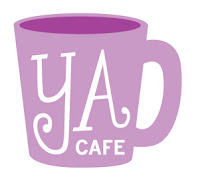
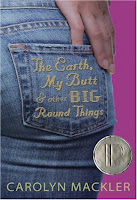
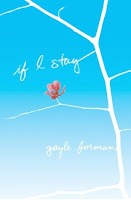

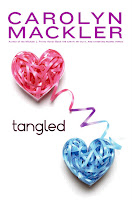


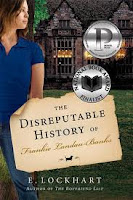


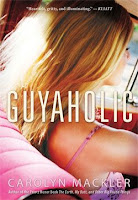

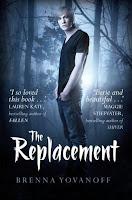






 Call me Gabi (pronounced gah-BEE). I'm a writer, freelance teacher, and a lover of books and words. I'm also the instigator of DIY MFA. iggi's my sidekick, but he thinks he's the brains behind this operation.
Call me Gabi (pronounced gah-BEE). I'm a writer, freelance teacher, and a lover of books and words. I'm also the instigator of DIY MFA. iggi's my sidekick, but he thinks he's the brains behind this operation.
 Body Image in Literature
Body Image in Literature YA Cafe: Interview with Julia Mayer
YA Cafe: Interview with Julia Mayer YA Cafe: New and Improved!
YA Cafe: New and Improved!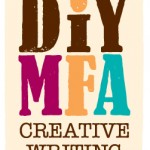 The new face of DIY MFA!
The new face of DIY MFA!